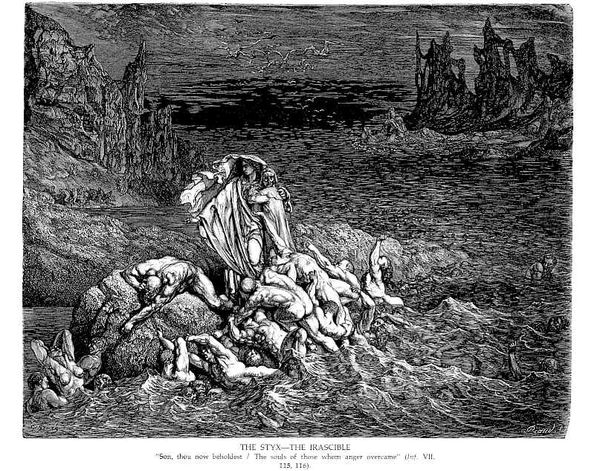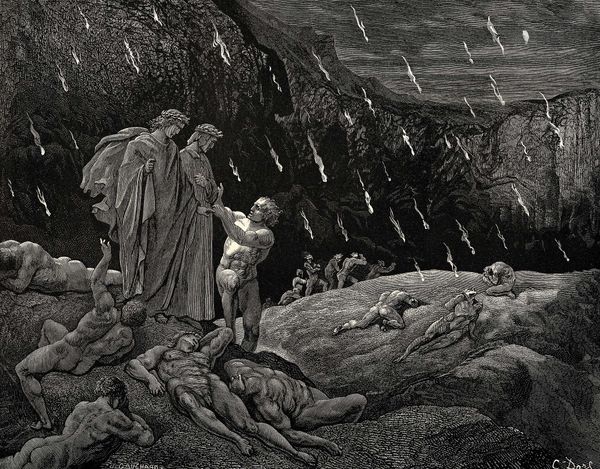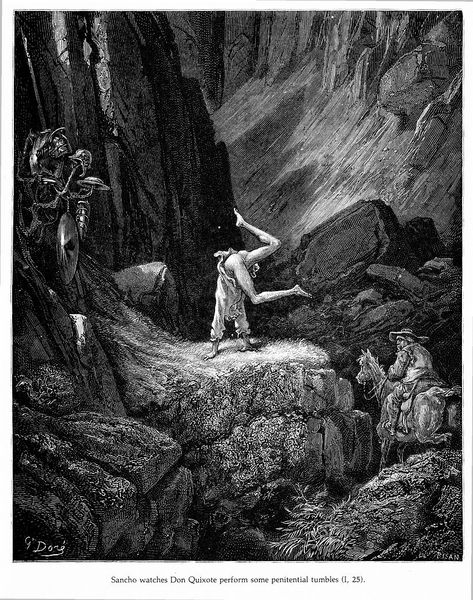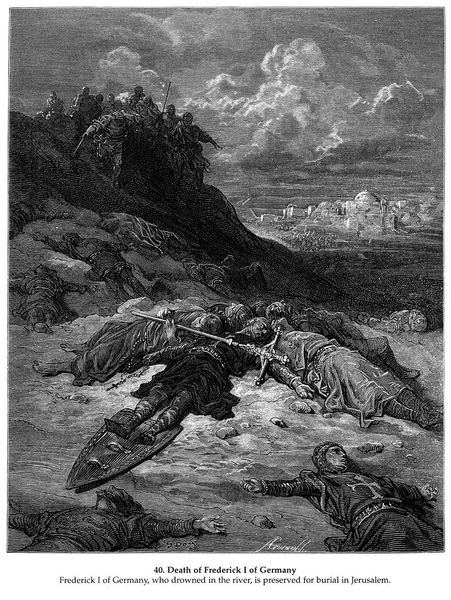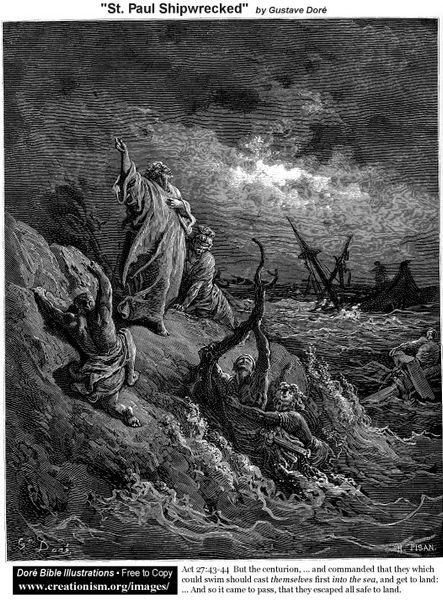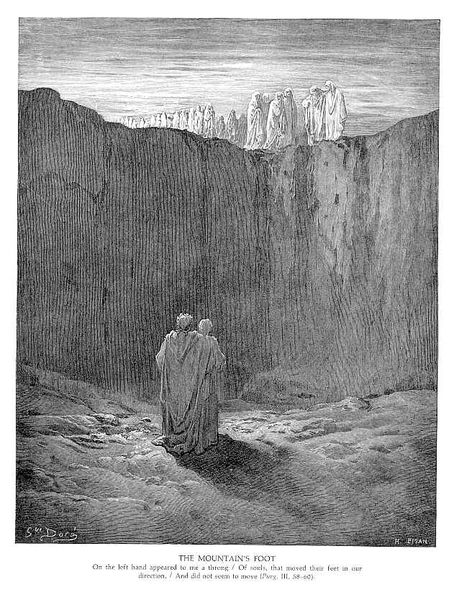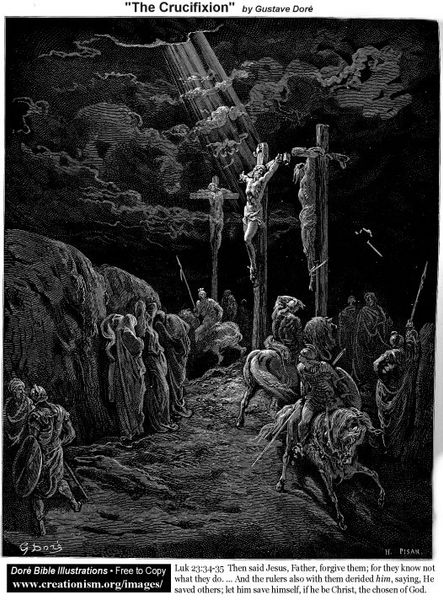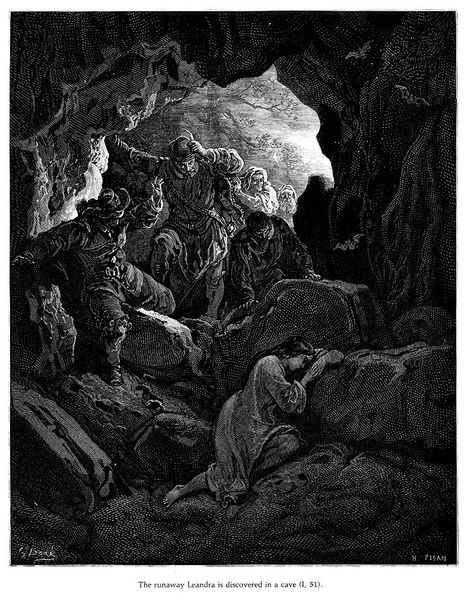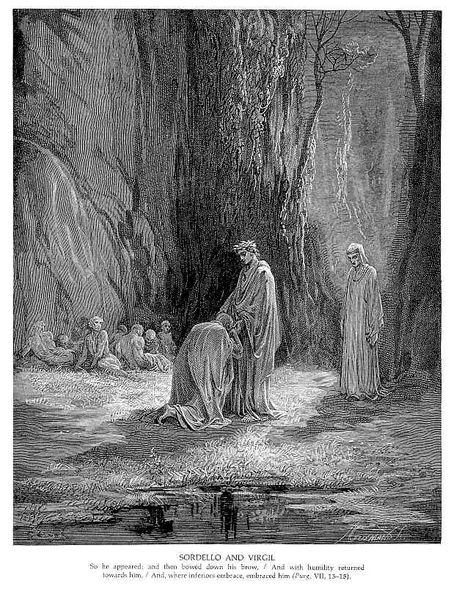
print, photography, engraving
#
narrative-art
# print
#
figuration
#
photography
#
romanticism
#
line
#
history-painting
#
engraving
Copyright: Public domain
This engraving of Brunetto Latini was made by Gustave Doré in the 19th century. It's a scene of Dante's Inferno, and rendered with the labor-intensive process of engraving, its stark black and white contrast is achieved by meticulously carving lines into a metal plate, a skilled tradition that stands apart from the painterly techniques of fine art. The material itself, likely steel or copper, demands precision, requiring patience and control to translate Doré's vision into a tangible form. Each line contributes to the overall composition, defining form and shadow with incredible detail. It speaks to the labor and time involved in its creation, the final image revealing the hand of the artist in every mark. Engraving, as a medium, has historically been associated with printmaking and the dissemination of information, and the textural depth achieved emphasizes its divergence from mere reproduction. It exists as a crafted object, bridging the gap between industrial process and artistic expression, challenging our conventional understanding of craft versus fine art.
Comments
No comments
Be the first to comment and join the conversation on the ultimate creative platform.
